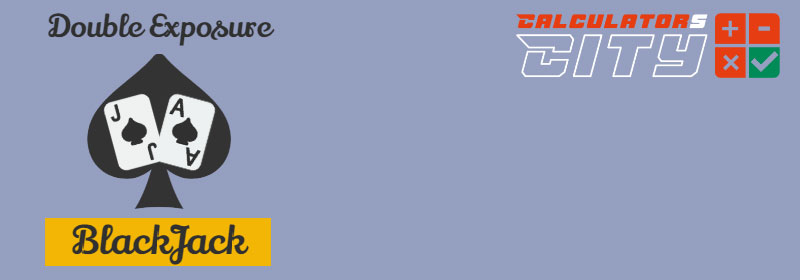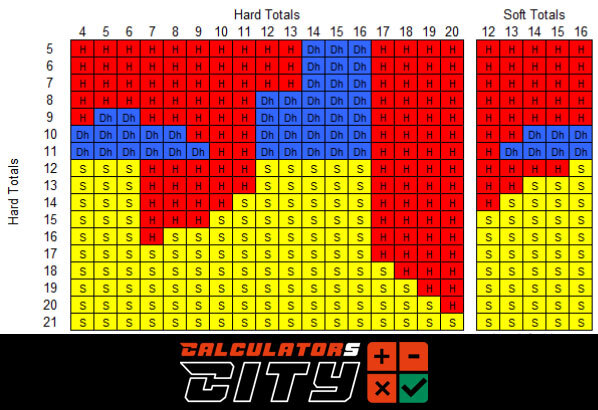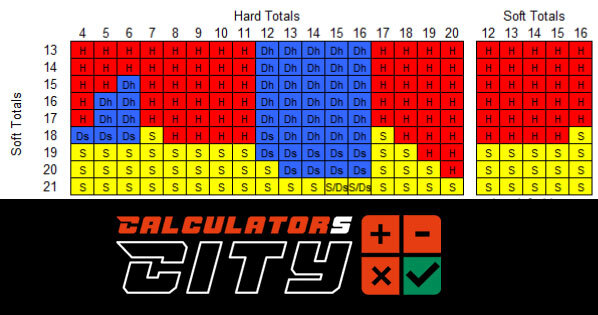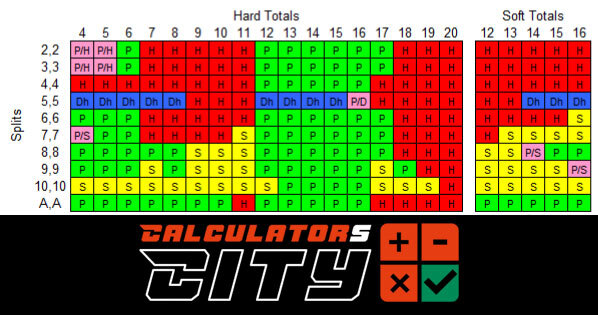Double Exposure Blackjack is a popular variant of traditional blackjack, where both of the dealer’s cards are exposed. This unique feature offers a significant advantage to players, as they can see the dealer’s total and make more informed decisions. The game, also known as Face-Up 21 or Dealer Disclosure Blackjack, has its origins in Richard A. Epstein’s concept of Zweikartenspiel, and was first introduced in Las Vegas casinos in the late 1970s.

Rules
The rules in this version of blackjack are similar to standard blackjack, but with several important modifications that dramatically change gameplay and strategy. In Double Exposure Blackjack, both of the dealer’s cards are revealed face-up, which gives players more information but also introduces counterbalancing house advantages. These adjustments form the core of double exposure blackjack rules and help maintain the house edge despite the added transparency.
In this variant, the dealer wins all ties (pushes), except when the player has a natural blackjack. A player blackjack pays even money rather than the traditional 3:2 payout. Additionally, players are typically allowed to split only once, limiting hand expansion opportunities.
Key Rule Variations:
- The dealer may either hit or stand on a soft 17.
- Blackjacks that result in ties may push or be awarded to the player.
- After a split, players may or may not be allowed to double their bets.
Player Restrictions:
- Doubling rules may vary, allowing doubles on either any first two cards or only specific card totals.
- Players may be allowed multiple splits or just one, depending on the variation.
- Some versions restrict players from splitting cards of differing 10-value face cards, such as a king and queen.
Impact on Expected Returns:
- Having the dealer stand on soft 17 offers a 0.39% return boost.
- Doubling after a split can increase returns by 0.32%.
- Tied blackjacks counting as wins improves returns by 0.22%.
- Limiting players to only one split can reduce returns by 0.71%.
- Restricting doubles to 9–11 or 10–11 only lowers returns by 1.04% and 1.44%, respectively.
Double Exposure Blackjack Basic Strategy Overview
Mastering blackjack double exposure requires a different approach than traditional blackjack. Because both dealer cards are revealed, players gain valuable information that dramatically alters optimal decisions. However, the built-in house advantages—such as the dealer winning all non-blackjack ties and even-money payouts—mean that strategy must be precise to maintain a competitive edge.
This double exposure blackjack guide outlines the core principles players should follow to reduce the house edge and make the most informed decisions possible.
1. Adjust Your Decisions Based on the Dealer’s Exposed Total
The most defining rule in blackjack double exposure is that both dealer cards are visible. This means you should always:
- Hit more often when the dealer shows a strong total (17+)
- Stand more often when the dealer shows a weak total (12–16)
- Double aggressively when the dealer’s hand is weaker than yours
- Split only when it produces a clear advantage over the dealer’s visible outcome
Since you know the dealer’s exact total, mistake-free play becomes even more important.
2. Stand More Frequently When the Dealer Has a Bust Hand
In standard blackjack, you stand based on probability; in double exposure blackjack strategy, you stand based on certainty. If the dealer’s total is in the 12–16 range, and your hand isn’t already busted, you should stand far more often—even on mediocre totals like 12, 13, or 14.
This rule holds because the dealer must draw until reaching 17, making low totals vulnerable to busting.
3. Never Take Insurance
Insurance is already a losing bet in standard blackjack, but in blackjack double exposure it becomes even more disadvantageous. You can see whether the dealer has a blackjack immediately because both cards are exposed—making insurance unnecessary and wasteful.
Player Hard Totals

- Hard 5-7: Double down if allowed against dealer 14-16; otherwise, hit.
- Hard 8: Double down against dealer 12-16; hit all others.
- Hard 9: Double against dealer 5, 6, and 12-16; hit others.
- Hard 10: Double against dealer 4-8 and 12-16; hit others.
- Hard 11: Double against dealer 4-9 and soft 13-16; hit otherwise.
- Hard 12-16: Stand against dealer 4-6, 12-16; hit otherwise.
- Hard 17-20: Stand unless the dealer’s hand could beat yours; if holding 19, hit against a dealer showing 10, 9, Ace, or 8.
Player Soft Totals

- Soft 13: Double down if allowed against dealer 12-16; hit otherwise.
- Soft 14-15: Double against dealer 6, 12-16; otherwise, hit.
- Soft 16-17: Double if allowed against dealer 5, 6, and 12-16; hit otherwise.
- Soft 18: Double against dealer 4, 5, and 13-16; stand against dealer 6 or 12; hit all others.
- Soft 19: Double if allowed against dealer 12-16; stand otherwise.
- Soft 20: Double against dealer 13-16; stand otherwise.
Splitting Pairs

- Pairs of 2s and 3s: Split against dealer 4-6 and 12-17.
- Pairs of 4s: Split against dealer 6 and 12-16.
- Pairs of 5s: Split only if double down after split is permitted against dealer 16; otherwise, double against dealer 4-8 and 12-15.
- Pairs of 6s: Split against dealer 4-6 and 12-17; stand against dealer 14-16.
- Pairs of 7s: Split against dealer 4-6 and 12-17; stand against 11 and soft 12-16.
- Pairs of 8s: Split against dealer 4-8 and 12-17; hit against dealer 19-20.
- Pairs of 9s: Split against dealer 4-6, 8, 12-16, and soft 16-17; hit against 19-20.
- Pairs of 10s: Split only against dealer 13-16; stand on others.
- Pairs of Aces: Split against dealer 4-10, 12-16, and soft 12-17.
| Your Hand | Dealer’s Face-up Totals | ||||||||||||||||||||||
| 4 | 5 | 6 | 7 | 8 | 9 | 10 | 11 | 12 | 13 | 14 | 15 | 16 | 17 | 18 | 19 | 20 | A,A | A,2 | A,3 | A,4 | A,5 | A,6 | |
| 5 | H | H | H | H | H | H | H | H | H | H | D | D | D | H | H | H | H | H | H | H | H | H | H |
| 6 | H | H | H | H | H | H | H | H | H | H | D | D | D | H | H | H | H | H | H | H | H | H | H |
| 7 | H | H | H | H | H | H | H | H | H | H | D | D | D | H | H | H | H | H | H | H | H | H | H |
| 8 | H | H | H | H | H | H | H | H | D | D | D | D | D | H | H | H | H | H | H | H | H | H | H |
| 9 | H | D | D | H | H | H | H | H | D | D | D | D | D | H | H | H | H | H | H | H | H | H | H |
| 10 | D | D | D | D | D | H | H | H | D | D | D | D | D | H | H | H | H | H | H | D | D | D | H |
| 11 | D | D | D | D | D | D | H | H | D | D | D | D | D | H | H | H | H | H | D | D | D | D | H |
| 12 | S | S | S | H | H | H | H | H | S | S | S | S | S | H | H | H | H | H | H | S | S | S | H |
| 13 | S | S | S | H | H | H | H | H | S | S | S | S | S | H | H | H | H | S | S | S | S | S | H |
| 14 | S | S | S | H | H | H | H | S | S | S | S | S | S | H | H | H | H | S | S | S | S | S | H |
| 15 | S | S | S | H | H | H | S | S | S | S | S | S | S | H | H | H | H | S | S | S | S | S | H |
| 16 | S | S | S | H | S | S | S | S | S | S | S | S | S | H | H | H | H | S | S | S | S | S | H |
| 17 | S | S | S | S | S | S | S | S | S | S | S | S | S | H | H | H | H | S | S | S | S | S | H |
| 18 | S | S | S | S | S | S | S | S | S | S | S | S | S | S | H | H | H | S | S | S | S | S | S |
| 19 | S | S | S | S | S | S | S | S | S | S | S | S | S | S | S | H | H | S | S | S | S | S | S |
| 20 | S | S | S | S | S | S | S | S | S | S | S | S | S | S | S | S | H | S | S | S | S | S | S |
| 21 | S | S | S | S | S | S | S | S | S | S | S | S | S | S | S | S | S | S | S | S | S | S | S |
| 4 | 5 | 6 | 7 | 8 | 9 | 10 | 11 | 12 | 13 | 14 | 15 | 16 | 17 | 18 | 19 | 20 | A,A | A,2 | A,3 | A,4 | A,5 | A,6 | |
| A,2 | H | H | H | H | H | H | H | H | H | H | H | H | H | H | H | H | H | H | H | H | H | H | H |
| A,3 | H | H | H | H | H | H | H | H | H | H | H | H | H | H | H | H | H | H | H | H | H | H | H |
| A,4 | H | H | H | H | H | H | H | H | H | H | H | H | H | H | H | H | H | H | H | H | H | H | H |
| A,5 | H | H | H | H | H | H | H | H | H | H | H | H | H | H | H | H | H | H | H | H | H | H | H |
| A,6 | H | H | H | H | H | H | H | H | H | H | H | H | H | H | H | H | H | H | H | H | H | H | H |
| A,7 | S | S | S | S | H | H | H | H | S | H | H | H | H | S | H | H | H | H | H | H | H | H | S |
| A,8 | S | S | S | S | S | S | S | S | S | S | S | S | S | S | S | H | H | S | S | S | S | S | S |
| A,8 | S | S | S | S | S | S | S | S | S | S | S | S | S | S | S | S | H | S | S | S | S | S | S |
| A,10 | S | S | S | S | S | S | S | S | S | S | S | S | S | S | S | S | S | S | S | S | S | S | S |
| 4 | 5 | 6 | 7 | 8 | 9 | 10 | 11 | 12 | 13 | 14 | 15 | 16 | 17 | 18 | 19 | 20 | A,A | A,2 | A,3 | A,4 | A,5 | A,6 | |
| 2,2 | P | P | P | H | H | H | H | H | P | P | P | P | P | P | H | H | H | H | H | H | H | H | H |
| 3,3 | P | P | P | H | H | H | H | H | P | P | P | P | P | P | H | H | H | H | H | H | H | H | H |
| 4,4 | H | H | P | H | H | H | H | H | P | P | P | P | P | H | H | H | H | H | H | H | H | H | H |
| 5,5 | D | D | D | D | D | H | H | H | D | D | D | D | P | H | H | H | H | H | H | D | D | D | H |
| 6,6 | P | P | P | H | H | H | H | H | P | P | P | P | P | P | H | H | H | H | H | S | S | S | H |
| 7,7 | P | P | P | H | H | H | H | S | P | P | P | P | P | P | H | H | H | S | S | S | S | S | H |
| 8,8 | P | P | P | P | P | S | S | S | P | P | P | P | P | P | H | H | H | S | S | S | S | P | P |
| 9,9 | P | P | P | S | P | S | S | S | P | P | P | P | P | S | P | H | H | S | S | S | P | P | S |
| 10,10 | S | S | S | S | S | S | S | S | S | P | P | P | P | S | S | S | H | S | S | S | S | S | S |
| A,A | P | P | P | P | P | P | P | H | P | P | P | P | P | H | H | H | H | P | P | P | P | P | P |
| H | Hit | ||||||||||||||||||||||
| S | Stand | ||||||||||||||||||||||
| D | Double if Possible, Otherwise Hit | ||||||||||||||||||||||
| P | Split (Pair) | ||||||||||||||||||||||
Conclusion
While this strategy may seem more intricate than the Blackjack Basic Strategy used in traditional blackjack, mastering it is achievable with a bit of practice. The additional scenarios, though they might appear daunting at first, become more manageable once players are familiar with the “ties lose” rule and prepared to handle situations like hitting on matching 17s, 18s, 19s, and 20s. Embracing these adjustments can enhance your readiness for the unique circumstances that arise in this game variation, ultimately improving your overall gameplay.
FAQ
The house edge is around 0.67%, which is low compared to other casino games. This means the Return to Player (RTP) is approximately 99.33%.
Yes, many online casinos offer the game , with variations from different software providers like Microgaming, Pragmatic Play, and Play’n GO.
The key difference is that both dealer cards are exposed from the start, significantly impacting the strategy and decision-making process during the game.
The main advantage is the visibility of the dealer’s cards, giving players more information to base their decisions on. However, the dealer winning all ties except for tied blackjacks is a significant disadvantage.

